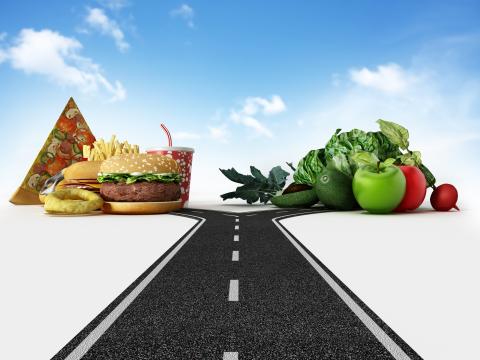A Healthier Fast Food Drive-Thru Trip
September is National Cholesterol Education Month, when patients are reminded about the importance of controlling their intake of dietary cholesterol to protect their heart and vascular system. We can improve our cholesterol numbers by improving our diet.
And 2021 is an especially good year to give our diet a makeover! Many people report that during the pandemic, they’ve gained 10, 20 or even more pounds. It’s been a challenge to eat well. Juggling jobs and supervising the schooling of kids, often living on a restricted budget, many people say they are relying more on fast food these days. It’s convenient, and it’s socially distanced, to go through a drive-through window or have food delivered.
But as you probably know, “fast food” often equals “fat food.” The calories can add up fast, and carrying extra pounds increases the risk of heart disease, arthritis, stroke, diabetes, some cancers and even Alzheimer’s disease.
First, it’s important to know that any takeout food or sit down meal can load on the cholesterol and calories. Researcher Ruopeng An, now at Washington University in St. Louis, reported that “eating at a full-service restaurant is not necessarily healthier than eating at a fast-food outlet. In fact, you may be at higher risk of overeating in a full-service restaurant than when eating fast food.” He recommended that people eat home-prepared food as much as possible.
But that’s not always practical. Fast food is…well, fast! It’s not as pricey as other eateries, in general. You can easily select the portion of food you want, as compared to the giant platters of food that sometimes arrive at your table at a sit-down restaurant. Here are six tips to make a drive-thru trip a little healthier:
- Order your burger plain instead of with cheese, bacon or fatty sauces. You can still select from plenty of toppings that won’t push you over your fat limit, such as ketchup, mustard, onions, pickles, and lettuce.
- Avoid giant burgers with large patties or several layers of meat. And if you can’t resist French fries, choose the smallest size. Some chains offer senior meals. Or they allow adults to order a child’s meal, which in many cases have more sensible portions and healthier choices. You might even score a cool toy to give to your grandkid!
- Choose your beverage wisely. Did you know that a 32-ounce sugared soft drink has almost 500 calories? That’s almost one-fifth of the daily calorie recommendation for a moderately active middle-aged person. Stick with water, iced tea, low-fat milk or diet soda. And remember: a milkshake is a dessert, not a beverage, weighing in at 1,000 calories for a large chocolate malted.
- Avoid the breading. Chicken is healthier than red meat, right? Wrong, if the chicken is breaded and deep fried. Remove some or most of the breading before eating—or better yet, select a skinless grilled chicken sandwich instead. And the same thing goes for fish.
- Pick a smart salad. More fast food outlets offer meal salads these days, and this can be a nutritious choice. But remember that cheese, creamy dressings, bacon topping and “crispy” chicken may add more fat than you’d get in a cheeseburger. Order your salad with no meat or with grilled chicken. Ask for fat-free dressing. Or try the fork dipping method, coating your fork with a bit of dressing before taking a bite rather than dumping the entire dressing packet on the salad.
- Do your homework. If you aren’t sure about the fat, calorie or sodium content of menu items, ask to see a nutritional value list to help you plan your meal. Chain restaurants, which include most fast food outlets, are required by law to offer this information, and you can also find it on the company’s website. (Check out the Calorie King website to find nutritional information for many popular restaurant chains.)
